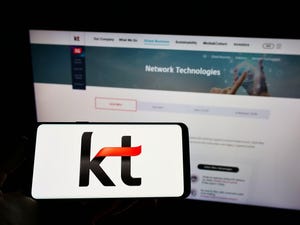WiMax Subbing for DSL in Vietnam
Vietnam's ISPs are set to join the growing number of emerging-market service providers deploying WiMax as a DSL alternative
April 24, 2009

In Vietnam, some ISPs are ready to deploy WiMax, not as a competitor to 3.5G mobile technologies, but as an alternative to DSL, once licenses are issued.
"We have ISPs and investors waiting," Dr. Ray Owen, head of technology for Asia and general director of Motorola Vietnam, tells Light Reading Asia.
Owen confirmed that Motorola Inc. (NYSE: MOT) is working on WiMax with a number of Vietnamese and international ISPs but would not be drawn on their identities. Those deals are in addition to the trial Motorola began last November with Vietnam's largest ISP, Vietnam Data Communication Co. (VDC) . (See Moto in Vietnam Wimax Trial.)
That trial has now entered its second phase, with services to "friendly" customers, but has to operate under a trial license, as 2.3 MHz and 2.5 MHz WiMax licenses have yet to be issued.
"We always knew it [WiMax license allocation] would be after 3G licenses, but we hope for licenses before the end of the year," Owen says.
MobiFone , VinaPhone , Viettel, and new entrant GTel received those 3G licenses at the beginning of April and are expected to roll out across 70 percent of the country by the end of September. Both MobiFone and VinaPhone have announced plans to go with HSPA, and MobiFone has further committed to 98 percent population coverage within a year.
Owen is unfazed, believing that the WiMax and 3G propositions are very different. "WiMax in Vietnam is not a cellco model but, rather, an ISP one… It is not competing with GSM or 3G data," he contends. 3G data, Owen believes, needs to be all about value-added services, while WiMax is purely an access play, helping to make it cheaper.
"3G is an expensive proposition from an ISP perspective. It has far more QoS and needs it to deliver the quality of handover, etc. WiMax is an alternative and cheaper pipe for ISPs. Its core network also helps, as it is closer to an IT network and built with standard, off-the-shelf, IP-based products. This makes it much easier to integrate with IP networks such as VPN.”
WiMax in Vietnam is unlikely to compete on mobility. Despite the fact that Motorola is using the 802.16e mobile version of WiMax, Owen concedes that ISPs and consumers want a nomadic and not fully mobile offering, as minimizing costs is vital.
The idea of using WiMax as a DSL substitute isn't unique to Vietnam. Reliance Communications Ltd. is taking that route in India, while Sri Lanka's Dialog Telekom has deployed WiMax only for fixed broadband wireless access to enterprises. (See Dialog Talks Up HSPA+.)
All of which suggests that the success of WiMax, or indeed any technology delivering Internet access as its major service in emerging markets, depends on the ability of vendors to produce products that minimize the total cost of ownership. As Owen says, "If consumers can buy a netbook in Vietnam for $200, it's difficult to see them paying $100 for a dongle for access."
— Catherine Haslam, Asia Editor, Light Reading
You May Also Like










